
Quality stocks are one of the most ambiguously defined investment factors available to investors. The term “quality” tends to reflect some degree of a publicly-traded company’s underlying financial, fundamental health. For the QUAL ETF, iShares screens for high return on equity, stable year-over-year earnings growth, and low financial leverage. While these exact metrics are not disclosed for each, the screens do give a sense of attempting to limit companies with questionable financial health.
Much like the pattern viewed with Momentum stocks in April’s Know What You Own: MTUM report, investors’ preference for these more conservative stocks has tended to oscillate erratically between being in high demand and essentially left for dead. The most recent Google Trends data suggests that investors are more interested in this theme in this period of heightened volatility.
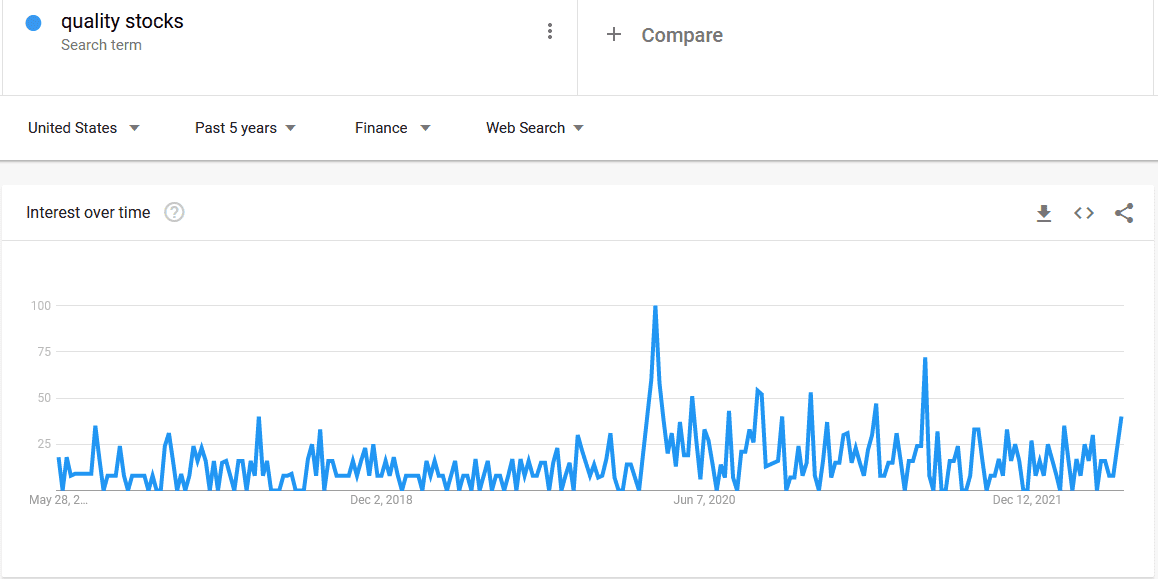
*Data via Google Trends as of 5/27/22
Before digging into the holdings, as mentioned before, it’s important to note that not all “Quality” stocks are considered equal. More specifically, the screening process for Quality stocks tends to vary from ETF provider depending on the research methodology utilized. Furthermore, several ETF providers have combined the Quality factor screening process along with other factors such as Momentum, Dividends, and sectors, making it critically important to understand the selection process.
QUAL stands as the largest ETF of its kind, with roughly $20.3 billion in net assets*. Currently, QUAL has roughly a 30% weighted overlap with the S&P 500 (via SPY) with 124 holdings.
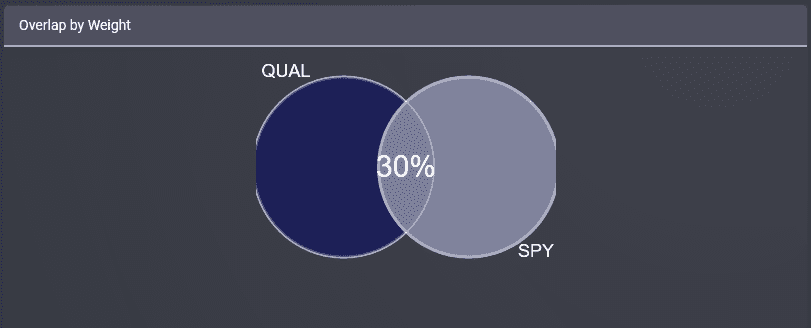
*Data via ETFRC.com as of 5/27/22
An important distinction in the top 10 holdings of QUAL relative to the S&P 500 is the heavier allocation of 33.23% in QUAL’s top 10 vs. 27.68% in the S&P 500. While the top holding in QUAL is less, at 4.93% for Johnson & Johnson vs. a 6.99% weighting in Apple for the S&P 500, notice the higher weighting in the remaining holdings of QUAL. Despite being a more conservative investment theme, investors are taking on a higher degree of concentration risk relative to the market.

*Data via fundvisualizer.com as of 4/29/22
Regarding sector weights, at the time of this writing, there isn’t any material overweight or underweight relative to the S&P 500. Unlike several of the factor ETFs that we have covered in previous notes, QUAL’s sector allocation closely hugs the benchmark in this regard.
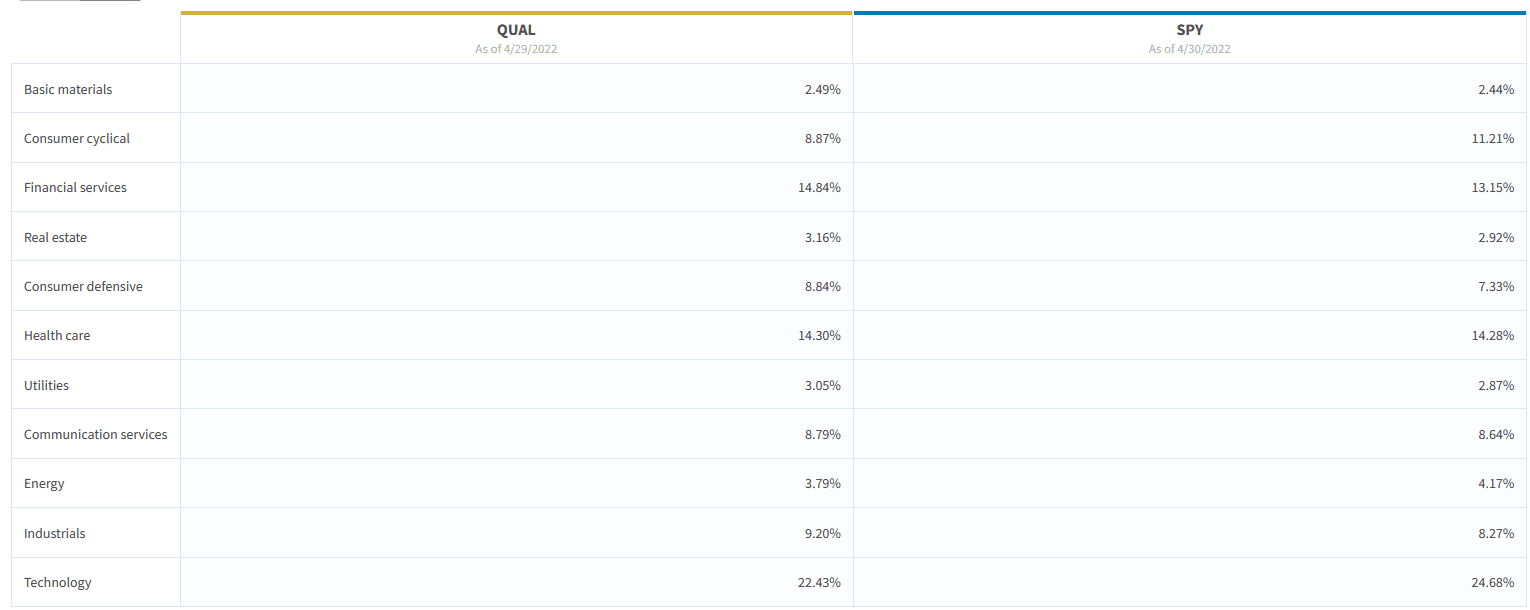
*Data via fundvisualizer.com as of 4/29/22
In addition to a lack of material overweight/underweight for any particular sector, size and style allocation have also closely resembled the S&P 500.

*Data via portfoliovisualizer.com as of 4/29/22
Where QUAL’s lack of sector overweight/underweight is most apparent in its performance over time. Note that the fund has hugged the S&P 500’s performance since January 2014, outperforming in only three of the last nine years.
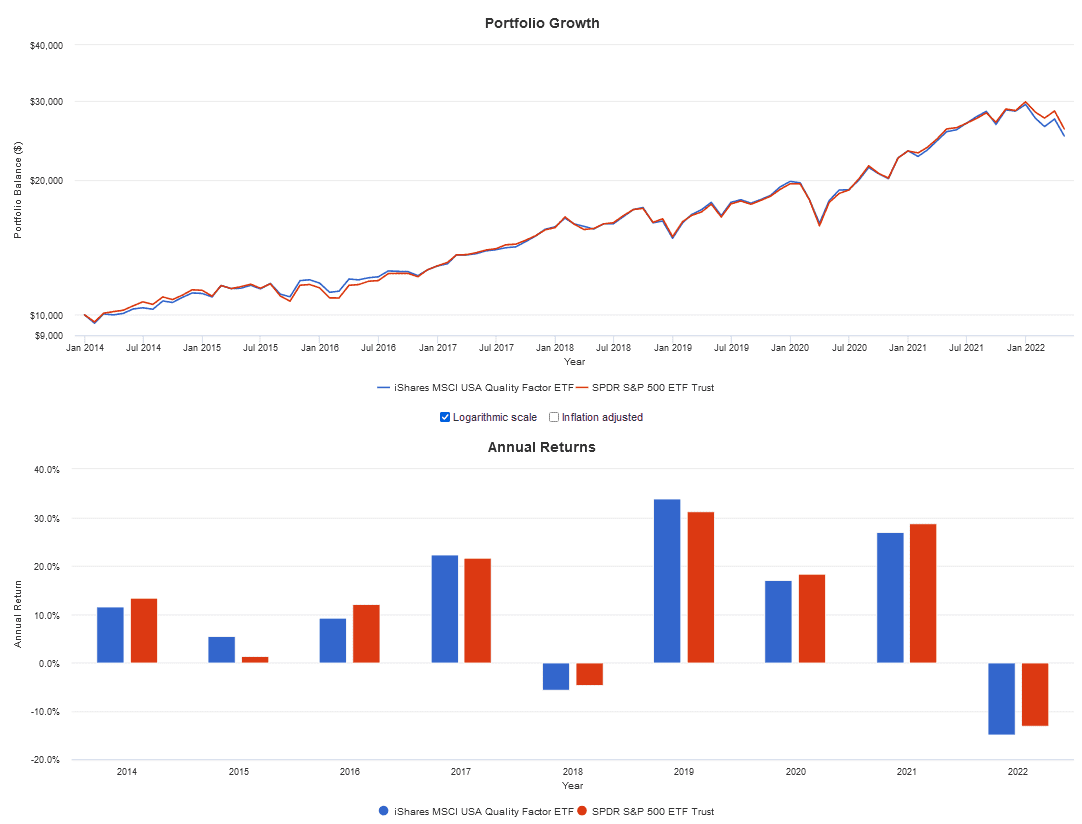
*Data via portfoliovisualizer.com as of 4/29/22
Not only has performance hugged the S&P 500, but drawdowns have also been very similar in nature as well. Note that the YTD drawdown is stronger than the S&P 500, despite a more conservative fundamental screening process.
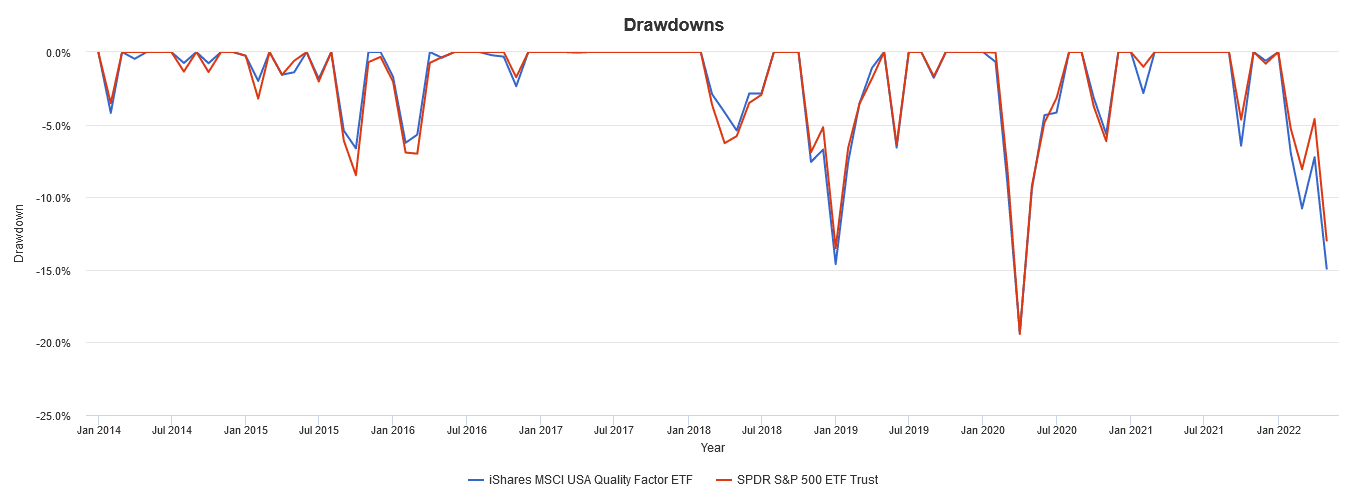
*Data via portfoliovisualizer.com as of 4/29/22
Looking deeper into risk across a variety of metrics, QUAL hasn’t historically provided much (if anything) in terms of risk mitigation across a variety of metrics. Similar drawdowns along with a lower Sharpe ratio, coupled with a 1.0 market Beta, all leave much to be desired, despite the more conservative fundamental screening process for this theme.

*Data via portfoliovisualizer.com as of 4/29/22
Unimmune to the recent broad market weakness, QUAL remains stuck below the declining 50-day moving average and testing $122 resistance, an area that the fund failed to breach to the upside early in the month. Relative to the S&P 500, the fund appears to be making an attempt to bottom after a nearly year-long stint of underperforming and is fighting with the ratio’s flat 50-day moving average. Until the relative performance can make a material turn to the upside, it becomes hard to make the bull case for this factor.
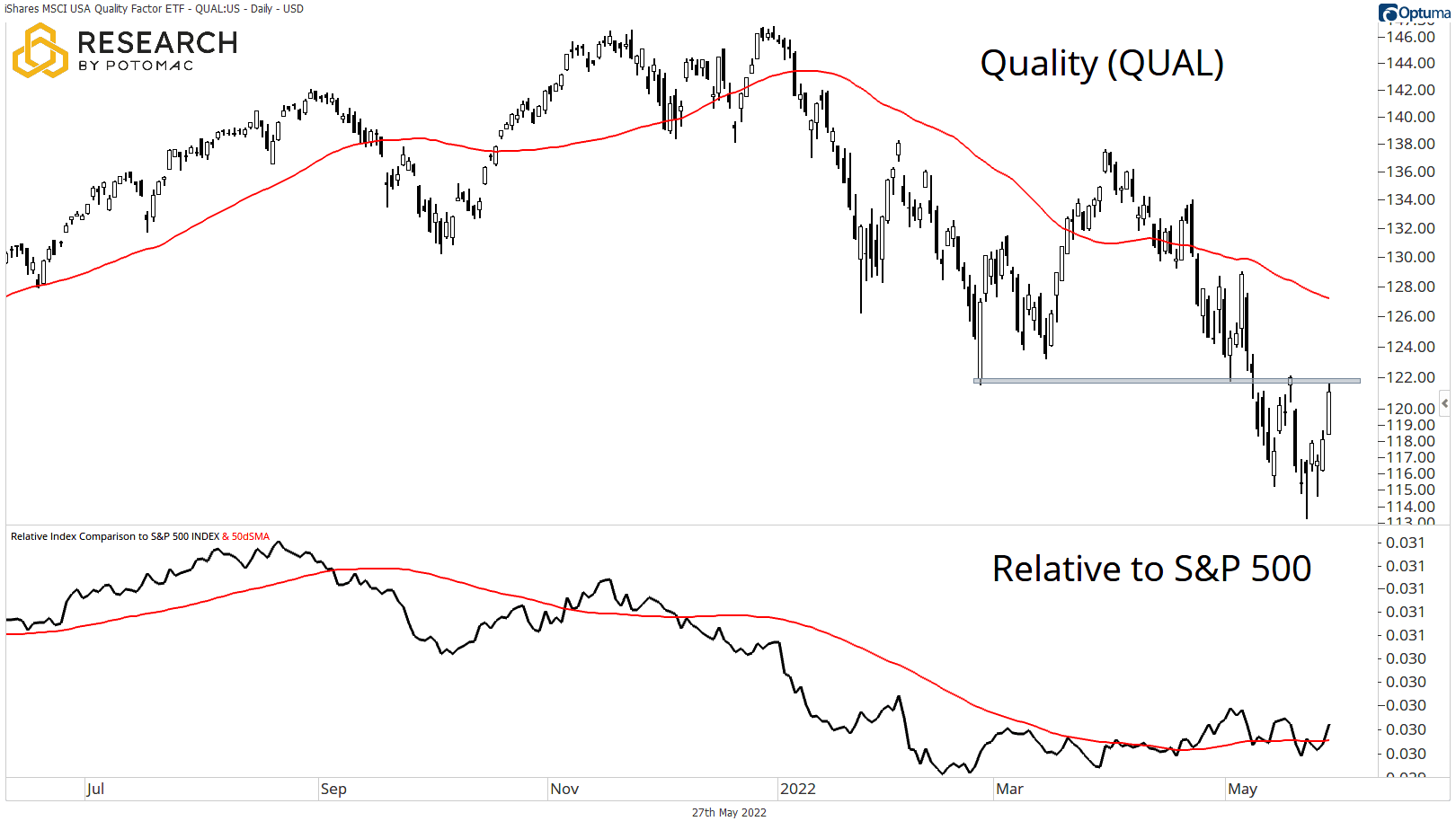
*Data via Optuma as of the close 5/26/22
Disclosure: This information is prepared for general information only and should not be considered as individual investment advice nor as a solicitation to buy or offer to sell any securities. This material does not constitute any representation as to the suitability or appropriateness of any investment advisory program or security. Please visit our FULL DISCLOSURE page.
